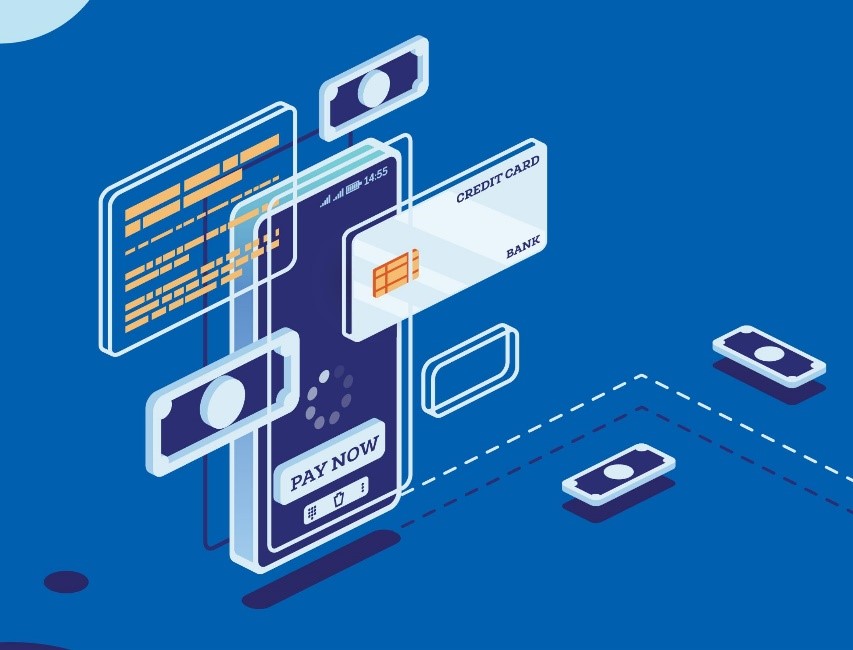State of play: payment hubs
Each month, Philip Benton, Principal Fintech Analyst at Omdia, explores a new topic and assesses the “state of play”, providing an analysis and understanding of the market landscape.

Payment hubs are increasingly seen as an attractive solution to manage the new world of payments
This month, Philip takes an in-depth look at payment hubs.
The payments sector is evolving rapidly with the growth of real-time payment rails, ISO 20022 adoption, cryptocurrencies, applications of GenAI and modern messaging technologies.
This is pushing banks to urgently upgrade their payment systems to align with new market infrastructure.
The evolving role of the payment hub
Omdia has defined a payment hub as a payments solution that enables financial institutions to process multiple payment types and centrally manage the orchestration process, and which can be deployed standalone. Typically, the payment hub will serve the middle and back offices with payments processing and should support multiple channels, payment types, and lines of business.
In the early 2000s, most large banks shifted payment functions that used to be highly disparate to centralised payment factory divisions to better serve the needs of their corporate clients, and these became early iterations of payment hubs. This change was predominately business organisation led, and many banks had to manage thin veneers over a fragmentation of payment systems.
The role of payment hubs has since shifted from creating middle- and back-office efficiency gains to becoming a platform that is central to creating value-generating products and services for end-user customers for both retail and corporate banks, and this has led to a surge of new payment hub products entering the marketplace.
Despite progress, the number of customers with active payment hubs is still relatively low compared with established products such as digital banking or core banking platforms. However, the payments hub vendor marketplace has seen a resurgence in recent years, with incumbent payment specialists facing growing competition from banking software and enterprise tech vendors as well as tech start-ups, with there being an increasing willingness from financial institutions to invest in payment hub solutions. Since the start of 2022, Omdia’s Banking Software Contracts tracker has recorded 57 new payment hub contracts, the third most common type of payment system upgrade.
Omdia also recently published its Omdia Universe: Payment Hubs report, which evaluated 12 vendors—each providing differentiated solutions addressing specific technological needs and requirements of banks, from framework-based offerings to extensive off-the-shelf solutions.
Multitude of emerging payment methods brings payment hubs to the fore
Payment organisations are under increasing pressure to achieve operational efficiency and revenue growth while delivering cost savings and an improved customer experience. The market for payment hubs has been gaining traction with the rollout of the ISO 20022 messaging standard and payment innovations—which require further investment.
There are continually new payment methods emerging, whether real-time payments, digital wallets, central bank digital currencies (CBDCs), and so on. Regulatory initiatives are driving major change in the payment industry with the development of real-time/instant payment infrastructures (for both retail and, increasingly, corporate use) in many markets pushing banks to invest in new systems.
At the same time, there have been significant changes to payment traffic composition, particularly in Europe, as the expansion of open banking and cloud-based technology makes the sending and receiving of money more accessible for businesses and consumers alike.
Omdia is forecasting technology spend on real-time payments to grow at a CAGR of 8.1% through to 2028, which equates to just over $4.6 billion. Real-time payments has been a particular success story in Brazil, with fintech Ebanx forecasting Pix to overtake credit cards in 2025 as the leading payment method for e-commerce.
Payment hubs are increasingly seen as an attractive solution to manage the evolving changes in payments. In Omdia’s IT Enterprise Insights 2025 survey, it was found that 59% of banks are increasing their spend on payment hub/orchestration solutions in 2024, and that is projected to continue going forward, with total IT spend on payment hubs expected to reach $3.4 billion by 2028 according to Omdia’s Payments Technology Spending Forecast.
A modern payment hub solution allows banks to centralise the payment orchestration and effectively ‘future-proof’ their ability to process payments. The big issue that banks are faced with, however, is legacy technology debt, with Omdia estimating 64% of the 2024 IT budget of corporate banks being allocated to simply ‘running the bank’.

Source: Omdia
Smaller financial institutions increasingly deploying payment hub solutions
Although large financial institutions were previously the typical users of payment hub solutions, smaller domestic banks are increasingly deploying payment hubs for smaller-scale projects that have a specific purpose, such as access to real-time payment rails, which is enabled through modern and flexible architecture and often deployed via Software-as-a-Service (SaaS).
While some larger banks prefer to build payment hubs in-house and will opt for a framework-based solution, most smaller banks still want to use solutions out of the box. Given the rapidly changing payment landscape, they will look to minimise customisations when working with off-the-shelf solutions to benefit from the ease of continuous upgrades and the latest functionality.
For banks, modernising the payment infrastructure is a priority. Financial institutions must adapt to the new world of payments to maintain a relationship with the customer by offering real-time payment overlay services, as well as be able to adopt newer alternatives. The adaptability of payment hubs and the ability to add new rails quickly, improve customer experience and monetise payments will become increasingly important.
To build or to buy?
Historically, banks would strategise IT investment by deciding to either build, buy or outsource. However, as the market has matured and the pace of technology development has accelerated alongside increased demand for a breadth of requirements, there has been a shift to a platform approach that combines vendor capabilities and co-innovation with the bank.
Having control of the platform is critical to banks since the quality of platform capabilities and experience drives business outcomes. The flexibility and customisation of modern platforms have pushed banks to seriously consider using an external platform from a specialist provider, although some banks (typically Tier 1 or fintech start-ups) will still choose to build their own or select a platform that provides more of a framework over a packaged solution.
Payment hubs are ultimately designed to accelerate the adoption of new payment schemes, deliver new value-added services to customers, significantly lower the total cost of ownership of payments processing and help make payments more accessible and inclusive.
With financial institutions seeking to process higher volumes of payments more rapidly and efficiently (through a diverse range of payment rails), every payment hub solution must be scalable and adaptable. Scalability is important, not just in terms of the ability to handle high-payment volumes on a 24/7 basis, but also in terms of infrastructure costs, with cloud deployment and SaaS becoming increasingly important.
Adaptability is also vital in terms of having an agile payment hub that can rapidly integrate new functionality or add new payment types. Modern payment hub solutions are required to offer microservices as standard, allowing banks to deploy through a phased approach and minimise the impact on day-to-day operations.
Modern payment hubs allow banks to adapt to ever-changing market conditions
As new models such as open finance become the norm, payment solutions will need to transition to smaller, composable, microservices-based standalone components that can be easily integrated through APIs, enabling co-innovation with the growing ecosystem of specialist fintech services. This will create the flexibility that banks need to respond to rapidly changing market demands.
Modern payment hubs must enable this shift and support the needs of customers beyond the immediate remit of the institution, thus enabling banks to focus on delivering new overlay services such as request-to-pay and cross-border real-time payments. By adopting a modern payment hub solution leveraging cloud technologies, DevOps practices and open APIs, banks can embrace the new world of payments, drive innovation and focus on service excellence.
About the author
 Philip Benton is a Principal Fintech Analyst at Omdia and writes analysis on the issues driving technological change in financial services. Prior to Omdia, he led consumer trends research in retail and payments at strategic market research firm Euromonitor.
Philip Benton is a Principal Fintech Analyst at Omdia and writes analysis on the issues driving technological change in financial services. Prior to Omdia, he led consumer trends research in retail and payments at strategic market research firm Euromonitor.
In this column, Philip discusses the technological implications and consumer expectations of the latest fintech trends.
You can find more of Philip’s views on fintech via LinkedIn or follow him on X @bentonfintech.










































